Yak-9T
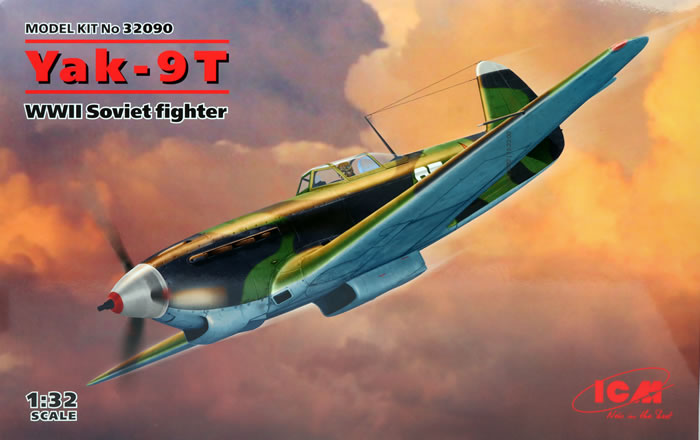
ICM,
1/32 scale
S
u m m a r y : |
Description and Item No.: |
ICM Kit No. 32090 - Yak-9T |
Contents and Media: |
160 parts in pale grey plastic; seven parts in clear plastic; markings for four aircraft; detailed illustrated instructions. |
Price: |
GBP£49.80 EU Price (£41.50 Export Price) Plus Shipping at Hannants |
Scale: |
1/32 |
Review Type: |
First Look |
Advantages: |
Fine surface textures; good level of detail inccluding full engine and armament; perfectly printed glossy decals. |
Disadvantages: |
No harness straps. |
Recommendation: |
This is a nice model with restrained surface textures that should be easy to build thanks to its modest parts count. However, this does not imply any lack of detail.
The engine is thoroughly fitted out and will look great if you decide to leave off the upper cowl parts.
It is good to see this important Soviet fighter finally available as a plastic kit in 1:32 scale.
It is also remarkable that these new high quality kit releases continue to arrive from Ukraine in their dark days. Buying their products is a small way to show our suport for our Ukrainian friends. |
Reviewed by Brett Green

The Yakovlev Yak-9 was a single-engine, single-seat multipurpose fighter aircraft used by the Soviet Union and its allies during World War II and the early Cold War. It was a development of the robust and successful Yak-7B fighter, which in turn was based upon the tandem-seat advanced trainer known as the Yak-7UTI.
The Yak-9 started arriving in Soviet fighter regiments in late 1942 and played a major role in retaking air superiority from the Luftwaffe's new Focke-Wulf Fw 190 and Messerschmitt Bf 109 G fighters during the grand Battle of Kursk in summer 1943.
The Yak-9 had a cut down rear fuselage with an unobscured canopy. Its lighter metal structure allowed for an increased fuel load and armament over previous models built from wood.

The Yak-9 was manoeuvrable at high speeds when flying at low and medium altitudes and was also easy to control, qualities that allowed it to be one of most produced Soviet fighters of the Second World War. It was produced in variants including the Yak-9T with the 37 mm (1.5 in) cannon and the large-calibre Yak-9K with a 45 mm (1.77 in) cannon firing through propeller hub, which was used for anti-tank duty and as a potent aircraft destroyer, the fighter-bomber Yak-9B with an internal bomb bay behind cockpit for up to 400 kg (880 lb) worth of bombs, the long-range Yak-9D and the Yak-9DD with additional wing fuel tanks to escort bombers over Eastern Europe, and the Yak-9U with a more powerful engine and improved aerodynamics.
The Yak-9 remained in production from 1942 to 1948, with 16,769 built (14,579 during the war).
After World War II, the Yak-9 would also be used by the North Korean Air Force during the Korean War.
Yak-9T
The Yak-9 was armed with a 37 mm Nudelman-Suranov NS-37 cannon with 30 rounds instead of the 20 mm ShVAK.
The cockpit was moved 0.4 m back to compensate for the heavier nose. Poor quality control led to multiple oil and coolant leaks from cannon recoil during prototype testing. This was identified and corrected.
Recoil and a limited supply of ammunition required accurate aiming in two- or three-round bursts.
The Yak-9T was widely used against enemy shipping on the Black Sea and against tanks. The cannon could penetrate up to 30 mm armour from 500 m – but it was also successful against aircraft. A single cannon hit was usually sufficient to tear the target apart. Virage (constant altitude and velocity turn) time was 18–19 seconds.
2748 were produced.*
As far as I am aware, this is the first 1:32 scale mainstream injection moulded plastic kit of the Yak-9. This is quite surprising considering the type’s success, significance, striking markings and sheer production numbers.
Silver Wings did release a resin 1:32 scale kit of the Yak-9M/T in 2018 but this was relatively expensive and availability was limited.
This is the first in a family of 1:32 scale plastic Yak-9s from ICM. This debut Yak-9T comprises just 160 parts in grey plastic, seven parts in clear plastic and decals for four marking options.
The plastic has a smooth satin texture a small number of crisply recessed panel lines and even fewer recessed fasteners. Control surfaces are moulded with subtle stretched fabric effect. The rear fuselage is also presented with scalloped fabric that looks good to my eye.
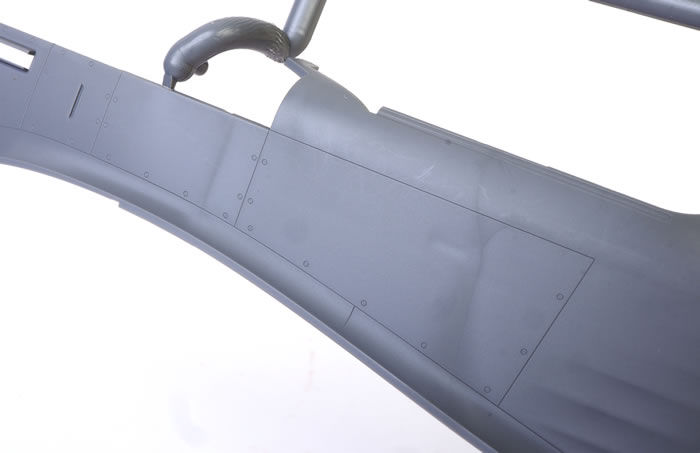
The plastic itself has some prominent mould flow marks but these will completely disappear under a coat of paint.
160 parts – including a full engine - is a modest count for a 1:32 scale kit, but this appropriately represents the simple and pragmatic design of this mass-produced warhorse.
Parts layout is conventional. The fuselage halves are presented full length in one piece each. The upper gun cowl and rear upper cowl are separate parts. The wings are made up from a full-span lower part and upper port and starboard halves.
Detail is good. The cockpit is made up from layers starting with some raised mouldings on the inside of the fuselage halves, supplemented by cockpit framework (just one part per side) and separate side consoles, trim wheels, throttle and mixture controls, oxygen bottle and more.
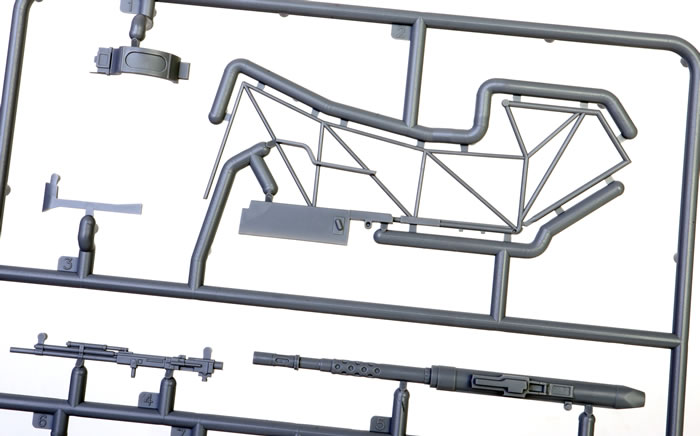
There are no photo-etched or other multimedia parts. The instrument panel is moulded with raised bezels and switches. An overlay decal is supplied if you are that way inclined. Alternatively, you could source individual dial decals or simply carefully paint the panel.
The seat backrest is moulded with a cushion but you’re on your own as far as a harness is concerned.
The radiator and oil cooler intakes feature nice honeycomb texture moulded in place.
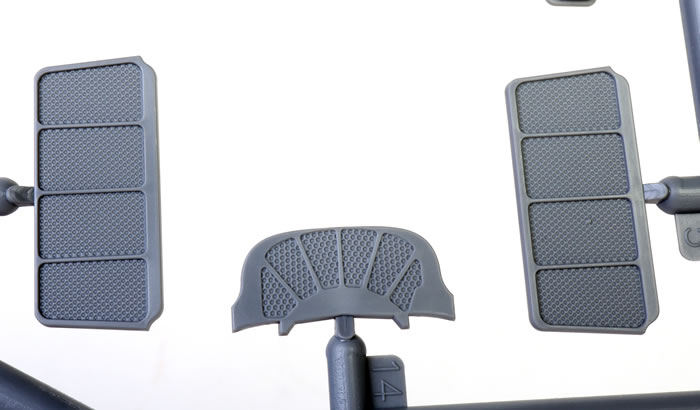
ICM has not skimped on the tail wheel. The strut is supplied in two pieces, as is the tail wheel.
A full engine and the 37 mm Nudelman-Suranov NS-37 cannon are included.
The instructions offer two fuselage assembly options with the choice of open or closed upper cowlings. The basic engine is made up from only eleven parts. If you plan to expose the engine, additional detail parts including frames, piping, machine gun and ammo feeds are included. The instructions are quite clear about fitting the extra parts.
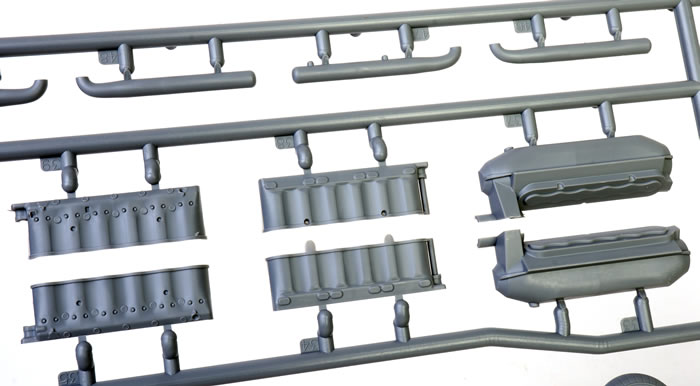
The wings are supported by a spar that should guarantee the correct dihedral. The spar also acts as the rear walls for the main undercarriage bays. Ten additional parts are added for the remaining undercarriage walls.
Control surfaces are separate parts and may be posed to taste. Flaps are moulded shut – a small mercy, I say.
The undercarriage is simple with one cover, one leg, oleo scissors and a two-piece main wheel for each side. The wheels are all plastic and split along the centreline. As far as I can tell they are neither bulged nor flattened. Time to get your sanding stick out. Inner undercarriage doors are supplied with two retraction struts each.
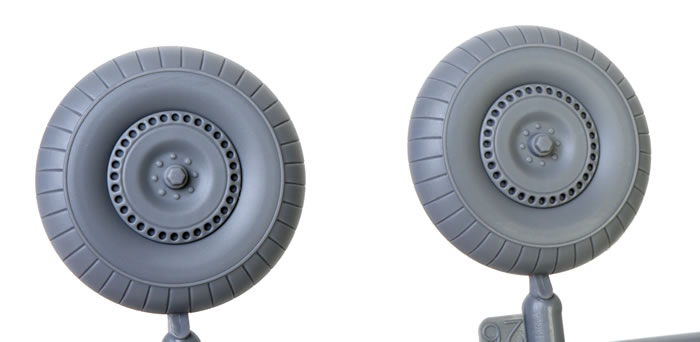
The clear parts are free from distortion. The windscreen features a separate pane of bullet proof glass for the inside. I haven’t checked to see if the centre sliding section will clear the rear canopy but it looks hopeful.
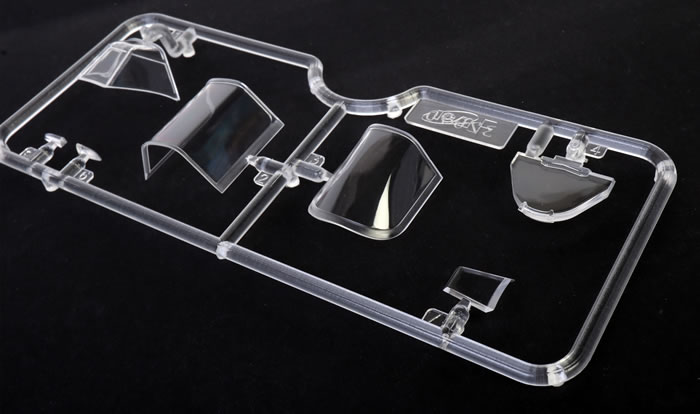
The gunsight and the wing tip navigation lights are clear parts too.
Markings
Four marking options are included.
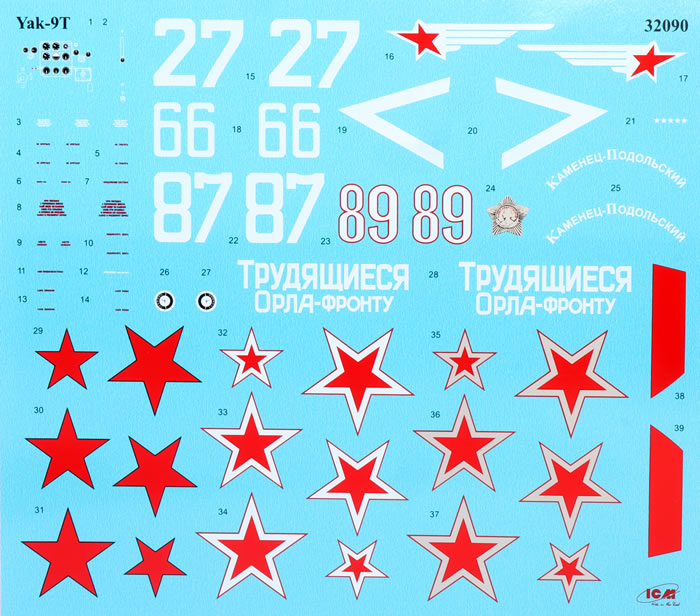
One is the early war scheme of Dark Green and Black upper surfaces with light blue lower surfaces, while the other three are painted in two grey tones on the upper surfaces and Light Blue below.
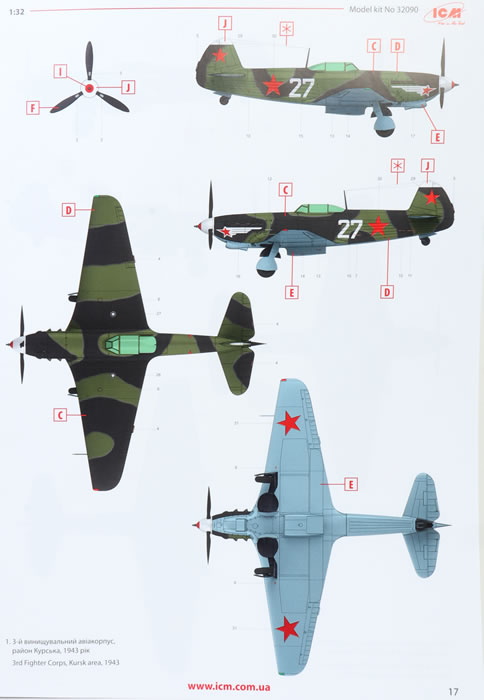
Decals are glossy an the colours are vibrant.
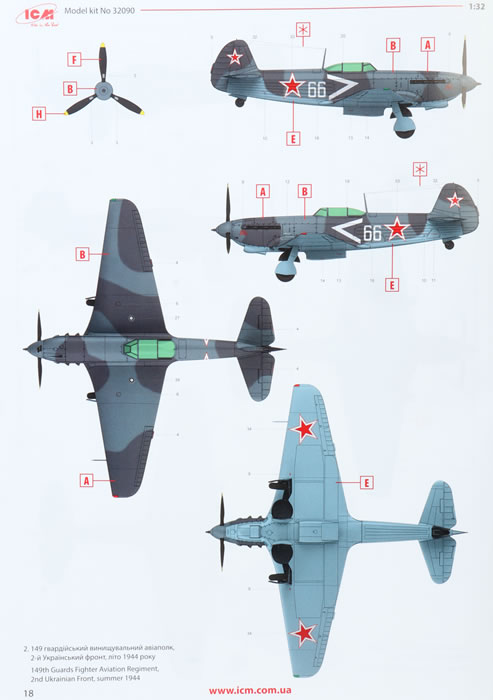
The small number of airframe stencils are included on the decal sheet.
This is a nice model with restrained surface textures that should be easy to build thanks to its modest parts count. However, this does not imply any lack of detail.
The engine is thoroughly fitted out and will look great if you decide to leave off the upper cowl parts.
It is good to see this important Soviet fighter finally available as a plastic kit in 1:32 scale.
It is also remarkable that these new high quality kit releases continue to arrive from Ukraine in their dark days. Buying their products is a small way to show our support for our Ukrainian friends.
*Historical information adapted from Wikipedia https://en.wikipedia.org/wiki/Yakovlev_Yak-9
Purchased by reviewer from Hannants
Review Text and Images Copyright © 2022 by Brett Green
Page Created 30 August, 2022
Last updated
30 August, 2022
Back to HyperScale Main Page
Back to Reviews Page

|
Home
| What's New |
Features |
Gallery |
Reviews |
Reference |
Forum |
Search